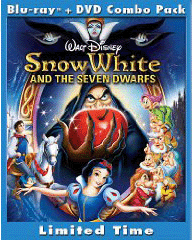 I recently posted in the new release section for Soundtracks news of Alex North’s Hard Contract score coming out on CD via Varese Sarabande in mid-July.
I recently posted in the new release section for Soundtracks news of Alex North’s Hard Contract score coming out on CD via Varese Sarabande in mid-July.The folks at Varese, as with many labels, know there are several scores by noted composers that have been largely forgotten, mostly because those films have disappeared from circulation. (Hard Contract, incidentally, has been reportedly slated for an Aug. 21st screening on TCM – so keep the recorders ready.)
North was one of Hollywood’s greatest film composers – his best-known works are the jazzy Streetcar Named Desire (the stellar Brando version) as well as Spartacus (perhaps his greatest work, alongside Cleopatra) and the stunning Who’s Afraid of Virginia Woolf? – and a good chunk of his work exists on CD, if not LP or DVD, but there’s one odd title that for a brief period popped up on the horizon in 2004, perplexed fans, and then disappeared: The Copper Scroll of Mary Magdalene (aka Rebel Jesus).
In 1968, North was working on his score for 2001: A Space Odyssey when director Stanley Kubrick (Spartacus) opted for a classical pastiche, and although North would continue to score major films thereafter, the projects became fewer, ending with music for John Huston’s own swan song The Dead (1987), Good Morning Vietnam (1987), and The Last Butterfly (1991) – the latter being North’s final work.
During the early seventies, North scored a mixed bag of films that included A Dream of Kings (1969), Willard (1971), Shanks (1974), and Journey Into Fear (1975), but the oddest project was the docu-drama The Copper Scroll of Mary Magdalene by veteran exploitation and indie filmmaker Larry Buchanan (Mars Needs Women, Zontar: The Thing from Venus, and Goodbye, Norma Jean).
Buchanan had returned to this aborted 1972 film thirty years later, and was apparently in the process of finishing the film for a 2005 DVD release until the project apparently froze due to his sudden death in 2004.
The film’s website which trumpeted the ‘epic’ nature of the film is no longer extant, the announced DVD release and possible soundtrack album never happened, and the film, with a 2004 copyright, remains unseen. More importantly, Alex North’s score, recorded with a 70-piece orchestra, remains unheard and locked away, although a few details can be found in Michael McDonagh’s lengthy piece “Death and Resurrection -- Alex North's Last "Lost" Score” on the composer’s official website.
The film also gets some mere mentions in Mary Elizabeth Strunk’s essay on Buchanan’s The Other Side of Bonny and Clyde, and there’s an archived interview with the director at Bijou Flix. Buchanan also wrote an autobiography titled It Came from Hunger: Tales of a Cinema Schlockmeister, published in 1996 by McFarland Press. McFarland also published Sanya Shoilevska Henderson’s biography Alex North, Film Composer in 2003.
For Buchanan fans, it’s a huge disappointment that the director’s last major work remains unavailable, and for North’s admirers, it’s an epic score few have heard. One has to presume it’s a matter of legal issues that have kept the film on the shelf, and perhaps with time, it and North’s music will make its way into the commercial realm where it belongs.
- MRH














